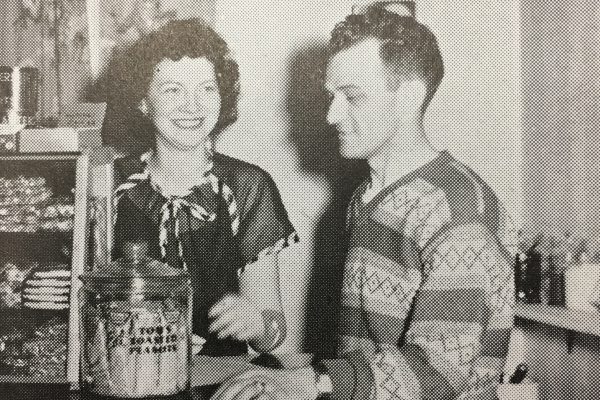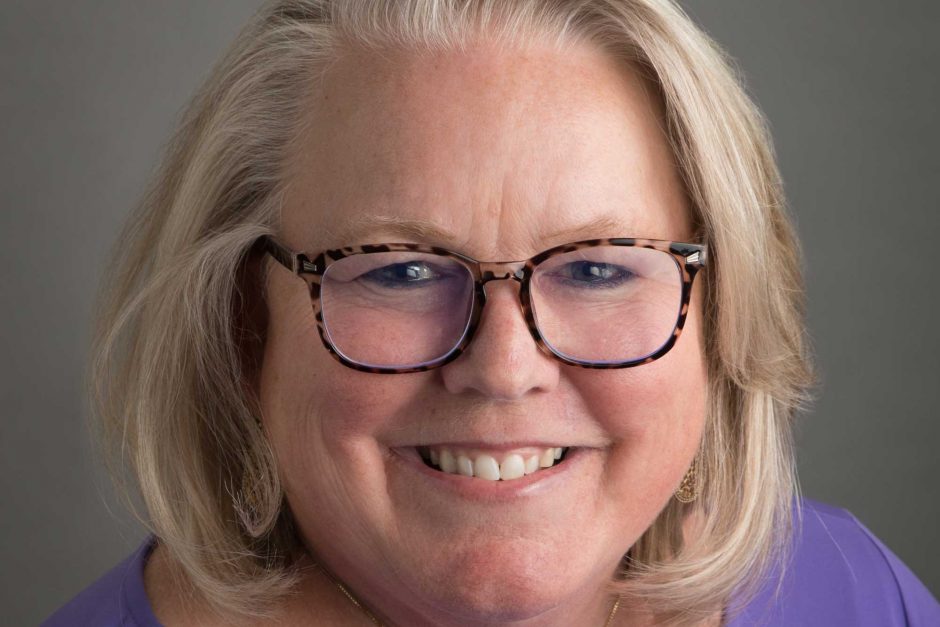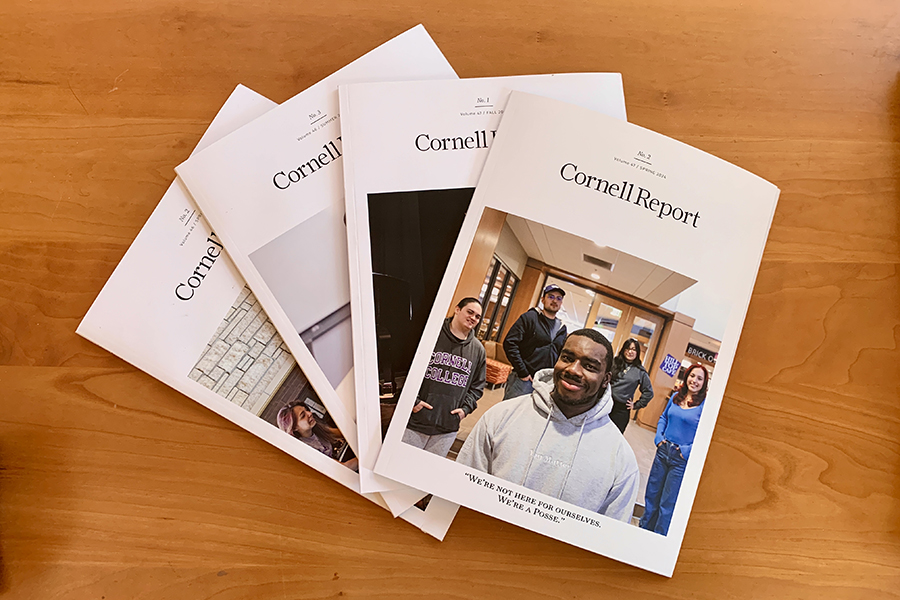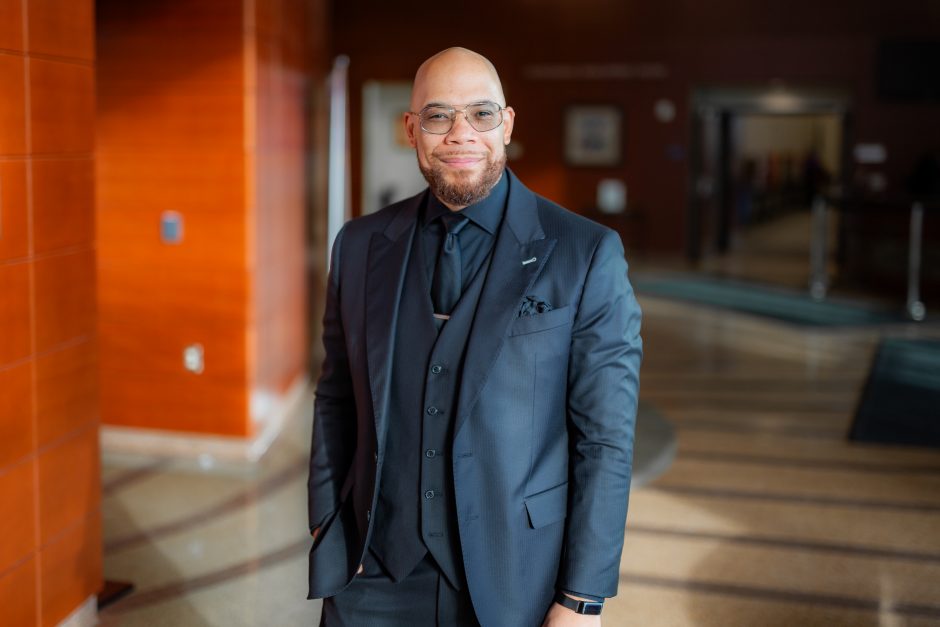Cornell’s first official social center: The Cole Bin
This story and one by Duane Carlson ’55 on the 1950s Cole Bin, originally appeared in the summer 2000 Cornell Report.
Long ago in olden times, Cornell, emerging belatedly from its sense of 19th century decorum, recognized the need for a student hangout. Dr. Russell Cole ’22 had moved, upon his appointment in late 1943, to the official presidential digs. So his old house lay fallow just as the post-war male population of the college was about to burgeon. Thanks to an epiphinal flash received by the administration, it was deemed a handy place for a “student union” and dubbed the Cole Bin.

The old house (situated on a corner one block toward the railroad tracks from the edge of campus closest to downtown) was what one today would euphemistically call unimproved. In fact, it was pretty rundown and had virtually no furnishings. The Bin probably should have been in the Guinness Book of World Records as the smallest student hangout on any American college campus, past or present. The working space consisted of three rooms without doors so they all blended together into one dingy space, maybe 700 square feet total.
The large front parlor (we didn’t call it that) was the dance floor. It had a jukebox, period. The second parlor had a couple of small tables and a few chairs where students could play bridge or just sit around and eat their burgers and fries. The alcove was where the burgers and fries came from. It consisted simply of a counter, behind which George Brown and his wife, Alice, took orders, cooked the eats on a hot plate, and served up the hamburgers, fries, soda, and coffee–lots of coffee.
Now you might notice that I didn’t say George rang up the sale. That’s because most of the food served in the Bin was dished out on credit! That’s right, on the cuff. The returned servicemen received their subsistence checks once a month, and the money usually went in a wink. Not to worry: George carried them. We kids, straight out of high school, were on tiny allowances and always scraping by. No problem: George carried us too. There wasn’t any “plastic.” George just kept track in a spiral-bound, soft-cover notebook, entering sums in a continuous linear script that resembled cuneiform more than Arabic numerals. Looking up your balance was a real challenge, but George would just toss the scruffy old notebook to anyone who wanted to look.
George never pressed anyone for money. One semester I never ponied up a single nickel at the Bin. My father’s eyes popped at year’s end when I told him I needed $42.65 to pay my hamburger bill. (At a quarter apiece, that’s a lot of beef!)
George Brown was the salt of the earth. So was Alice. There were no pretences about the Browns. They never lost patience or complained. They always seemed to be having as much fun as the students and it made you feel good just to be around them. But the main attraction at the Cole Bin was socializing with the opposite sex. There just weren’t that many opportunities at Cornell to get close to girls (speaking from the male point of view).
Dancing was the main activity at the Cole Bin. The jukebox played all the best of the ’40s music: Miller, Dorsey, James, Sinatra, Crosby, Peggy Lee, King Cole. The songs of parting and separation, so popular during the war years, were still around but giving way to more upbeat tunes and lyrics. Sounds from bands and singers now considered legends filled the front parlor without benefit of high-tech sound systems or even LP records. The old 78s worked just fine. And who was paying that much attention, anyhow, when you finally had your arms around a real-life girl, swaying to the music, sometimes just standing there together, barely moving, and sometimes spastically activated in jitterbug mode.
People dashed to the Cole Bin all day between classes, even though it was a 10- or 15-minute walk from campus. The Bin really started to swing (not rock) about 8 o’clock. Everything was over by 10 when the girls had to be in their dorms. The early hours really added to the fun, and I say that now in retrospect, although at the time I thought it was a crying shame. It sort of paralleled the English pub system: hours are limited, and everyone has to make every minute count.
The more crowded it was, the more intimate it seemed. But naturally, the old Cole Bin wasn’t good enough for the powers that be, whom pride of place compelled to build a “proper” student union. By 1947 college enrollment had soared to nearly 900, so more space (I guess) was needed for student R&R. The Commons was on the bigwigs’ minds even then, I think, because we were told the big, ugly nurses’ barracks that had been moved to the slough (pronounced “slew” in Iowa) between Merner and Pfeiffer was only “temporary,” although it lasted for 10 years. The bitterest pill of all, though, was that the new monstrosity was to be known as the “Cole Bin”!
The new places was OK (I guess), but it never had the charm of the real Cole Bin. The dance floor was a huge 1,000 square feet or more, and George Brown made his hamburgers in a space even bigger than the Maid-Rite downtown. It wasn’t even a pale imitation of the old Bin.
I had first considered going to the University of Illinois, where they had a much-touted and truly elegant student union. But for reasons of my own, I chose Cornell College, not giving much thought–or any weight– to comparitive amenities. The Cole Bin came as a total surprise, just like the intellectual world that Cornell opened for me. The Bin was just the right place at the right time–and there will never be another place like it.
Gene DeRoin ’49 and his wife, Erika, ran an editorial agency, Bookcrafters, Inc., in Chicago. He wrote this article on an Olympia portable and sent it via snail mail.



